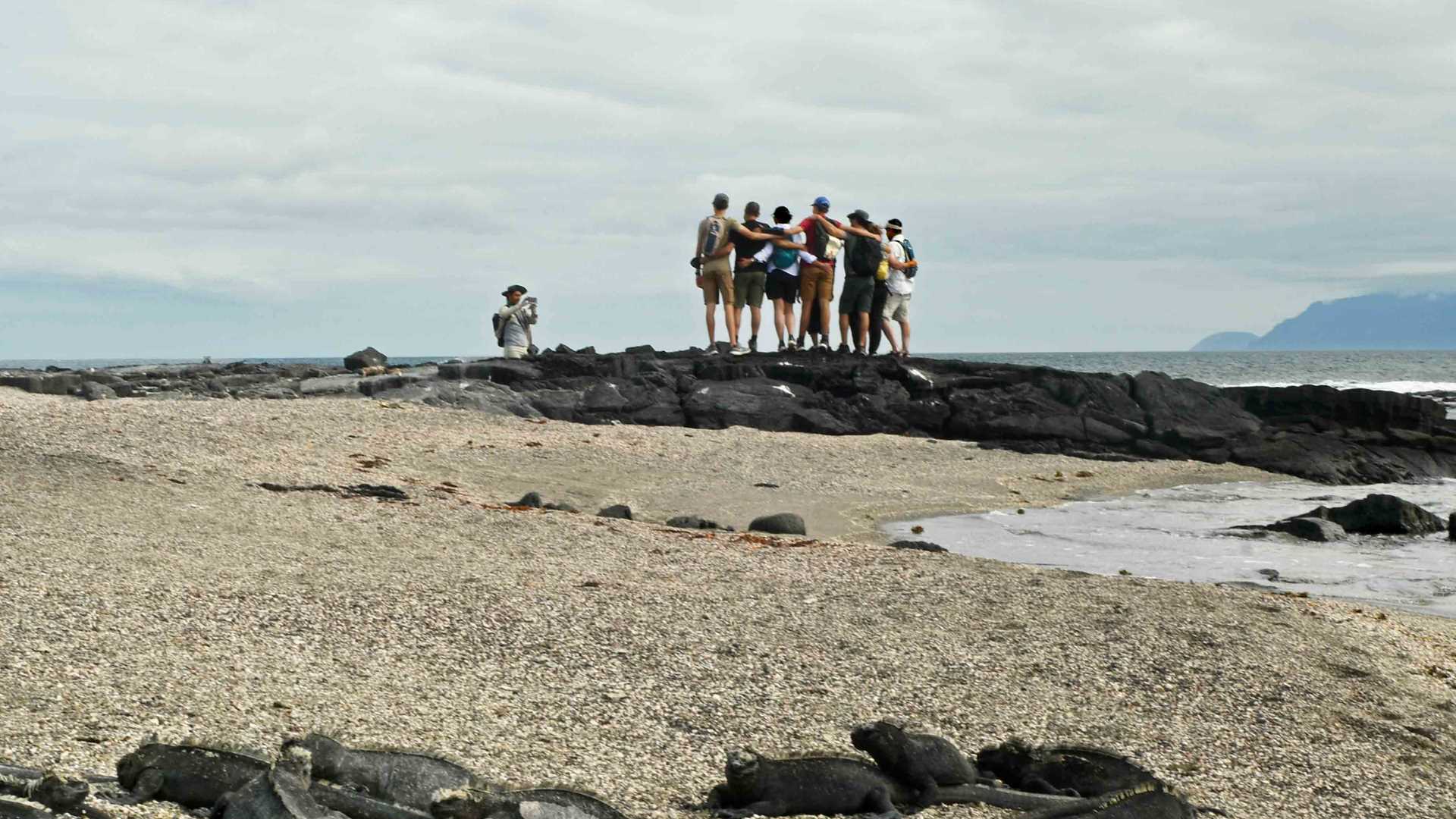We are now in the western part of Galapagos, where very active volcanoes are located and where the water is cold and full of nutrients that attract wildlife. This means we are more likely to encounter large animals, such as whales, as well as endemic creatures like the Galapagos penguin or flightless cormorants.
Early in the morning, the National Geographic Endeavour II dropped anchor off the coast of Fernandina, the youngest island in the archipelago. The black lava fields were impressive and so were their inhabitants! At Punta Espinoza, thousands of marine iguanas basked under the equatorial sun. After diving into cold water to feed on green algae, they must warm up their bodies to digest their meal. On the trail, we also came across Sally Lightfoot crabs and lava herons feeding on all the organic material left behind from the low tide.
Snorkeling also offered many highlights. Guests encountered Pacific green sea turtles feeding on green algae, sea lions, marine iguanas, octopus, and many fish species. We even had a couple of Galapagos penguins chasing a school of sardines right next to us.
At Punta Vicente Roca on the northern part of Isabela Island, we explored the coast on Zodiacs to spot fur seals, flightless cormorants, blue-footed boobies, and Galapagos penguins. We ended the marvelous day with winetasting on the sun deck as our ship crossed the equator at sunset.







